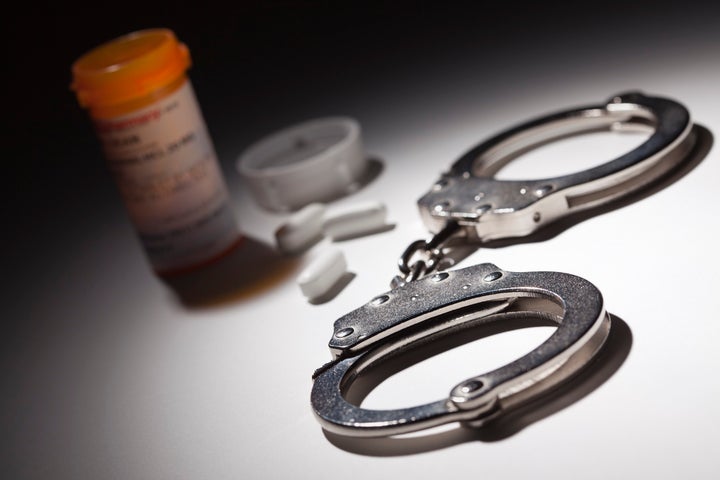
President Donald J. Trump has been teasing a “major announcement” on the “massive opioid problem” in recent weeks and plans to declare the opioid crisis a public health emergency today. His handpicked Commission on Combating Drug Addiction—created via executive order in March—is set to release its final report of recommendations to tackle the opioid epidemic on November 1.
In its preliminary report, the Commission, led by New Jersey Gov. Chris Christie (R), urged the president to declare the opioid crisis a “a national emergency under either the Public Health Service Act or the Stafford Act.” Such a move, they argued, would compel Congress to focus on funding and empower his cabinet to take the bold steps necessary to make forward progress.
And progress is desperately needed to stop record amounts of people from dying.
As cited in the preliminary report, 142 Americans die from opioids every day; the death toll of September 11th every three weeks. Opioids killed 33,000 Americans in 2015 alone. Not surprisingly, a recent federal study found that prescription painkillers are now more widely used than tobacco. We ingest more opioids than any country in the world.
Declaring a public health emergency is just the beginning, according to the Committee. They’re advancing a set of comprehensive tactics designed to help people struggling with addiction, Good Samaritans, and law enforcement agencies grappling with the opioid crisis. Recommendations include encouraging the development of non-opioid pain relievers; increasing medication-assisted treatments for opioid abuse, such as buprenorphine and Vivitrol; strengthening “Good Samaritan” laws that protect people from prosecution when they report an overdose; and mandating that every local law enforcement officer in the country carry naloxone, the drug that reverses opioid overdose.
There’s one recommendation that will, if implemented, provide the most dramatic shift in our approach to the opioid crisis. The Committee wants to free up federal dollars by removing an antiquated Medicaid exclusion related to inpatient addiction treatment.
Currently, treatment centers are exceptionally limited by the Medicaid 16-bed provision, which was enacted back in 1965 to discourage investment in “institutions for mental disease,” and to instead encourage the expansion of smaller, community-based mental health and substance abuse facilities.
Today, the Medicaid 16-bed provision turns opioid addicts away at the door. This does not happen to patients with chronic illnesses, perpetuating the stigma that mental and physical health care not the same thing despite the Mental Health Parity and Addiction Equity Act.
Sadly, when many people addicted to opioids can’t get treatment they wind up behind bars.
Due to capacity constraints, there are nearly a million people with opioid addiction who would not be able to access treatment, even if they wanted to. Treatment facilities are inundated with those who walk in wanting to change their lives, or those who are dropped off by police, or those who are transferred from a hospital or crisis center. Many are wait-listed. Some are outright rejected. There simply aren’t enough beds to accommodate all of the people who need help.
As a result, a whopping 80 percent of people addicted to painkillers or heroin are not getting treatment. Of those, approximately 18 percent will commit their first crime to score drugs or money for drugs and find themselves in the system.
Our correctional facilities are filled with inmates below the poverty line. A 2014 study showed inmates had an annual income of $19,185 prior to their incarceration, which is 41 percent less than non-incarcerated people in the same age groups. And low-income populations make up the largest percentage of 72.5 million members on Medicaid.
Taking in all these facts, one can surmise that treating addiction in the community with Medicaid dollars will result in a fewer number of Medicaid members who are addicted to drugs and reduce the number of those members who end up incarcerated.
The criminal justice system needs the relief. In 1980 there were 40,900 people incarcerated for drug offenses—the majority of them possession; by 2013, this number ballooned to 489,000. Prison systems are left in the unfortunate position of dealing with high levels of substance abuse and addiction, which profoundly affect the health and well-being of inmates. Many people who are addicted to drugs are already compromised with transferable diseases and chronic conditions.
Drug use increases risk for getting or passing on infections such as HIV, Hepatitis C, and sexually transmitted diseases because certain viruses can spread through blood or body fluids. A person addicted to opioids is especially vulnerable to these diseases when they inject drugs, share needles, or make poor choices while under the influence. They are also more susceptible to debilitating conditions such as heart disease and stroke.
According to the National Institute on Drug Abuse, every dollar invested in addiction treatment programs yields a return of between $4 and $7 in reduced drug-related crime, criminal justice costs, and theft. When cost reductions related to healthcare are included, total savings can exceed costs by a ratio of 12 to 1. Finding and/or creating the space in treatment facilities for Medicaid recipients who are addicted to opioids makes medical and financial sense.
Lifting the 16-bed limit is not the be-all-end-all, but, coupled with the Committee’s other recommendations, it provides a decent start in addressing the opioid crisis and its effect on our criminal justice system. If removed, it will free federal money to support expansions at treatment facilities, helping more people who are addicted to opioids recover.
The federal government has granted California, Maryland, Massachusetts, and New York a waiver to overcome the obscure Medicaid rule, and seven other states — Arizona, Indiana, Illinois, Kentucky, Michigan, Utah and Virginia — are seeking similar permission. The Committee’s recommendation would eradicate it for all states, boosting the number of beds available for low-income residents nationwide to keep them in treatment and, hopefully, out of jail.
